Broad museum headed downtown [updated]
August 17, 2010
The legendary art collection of Eli and Edythe Broad is one step closer to finding a permanent home—in a new “world class” museum to be built at 2nd Street and Grand Avenue in downtown Los Angeles.
County supervisors on Tuesday signed off on a revised plan to build the contemporary art museum on the site, which originally had been targeted for retail uses under the Grand Avenue Project. When that project originally was approved in 2007, developers had envisioned a sweeping array of businesses, residences, cultural attractions and a hotel along the corridor. Most of those elements are now on hold because of the recession, although one of the project’s centerpieces, a Civic Park stretching from the Music Center to City Hall, recently broke ground.
The supervisors’ sign-off on the new museum means that only one more official approval is required for the plan. That’s expected to come Monday from the joint powers authority overseeing the Grand Avenue Project.
Eli Broad was in the audience at the Hall of Administration on Tuesday, and said after the vote that the museum was headed downtown—not to Santa Monica, which also had been in contention.
“Absolutely it’s coming to this site,” Broad said.
But he declined to name the project’s architect, who is expected to be named on Monday. Architects including Rem Koolhaas and Diller Scofidio + Renfro have been reported as contenders for the commission.
Broad is picking up the $80 million to $100 million tab to build the museum and will set up a $200 million endowment to run it. Under the plan approved Tuesday, Broad also will be paying an additional $7.7 million that the county treasurer will hold in trust to build affordable housing downtown.
A museum to house the Broads’ collection—whose works are frequently loaned to other institutions for public display—is seen by cultural and business leaders as a vital step in downtown’s renaissance.
David Johnson, co-chair of MOCA’s board of trustees, said that the new museum across the street will “make Los Angeles one of the most important places in the world to see contemporary art.”
Carol Schatz, president and CEO of the Central City Association, said it will create 1,500 jobs and provide $234 million annually in related economic benefits.
“Cultural tourism is one of the great multipliers,” she noted.
Stephen Rountree, president and CEO of the Music Center, said he welcomes the energy the new museum will bring to the neighborhood—along with younger audiences he hopes will stick around to sample the offerings of his resident companies.
Broad, who did not address the board, echoed those hopes after the meeting:
“The exciting part is we want to dramatically increase attendance to all of the cultural organizations on Grand Avenue,” he said.
He noted that the new museum, with its architect to be named Monday, will join a spectacular stretch of buildings: Coop Himmelblau’s High School for the Visual and Performing Arts, Jose Rafael Moneo’s Cathedral of Our Lady of the Angels, the Frank Gehry-designed Walt Disney Concert Hall and MOCA, designed by Arata Isozaki.
The new 115,000-to-120,000-square-foot museum is to be built on three levels. Its galleries will display pieces from the Broads’ collection of more than 2,000 works by artists including Andy Warhol, Roy Lichtenstein, Damien Hirst, Cindy Sherman and Jeff Koons.
Posted 8/17/10
Updated 8/18/10: Following Broad’s reported comments on Supervisor Yaroslavsky’s website that the museum “absolutely” will be built in Downtown Los Angeles, a spokeswoman for the Broad Foundation, Karen Denne, said Wednesday that “no decision has or will be made” until after the upcoming meeting of the Joint Powers Authority. She said Broad did not make the statement, which is documented in the writer’s notes from her interview with Broad on Tuesday at the county Hall of Administration. The supervisor’s website stands behind its report.
NeverWonderLand 2010
August 12, 2010
 “NeverWonderLand” imagines a kind of mash-up between Lewis Carroll’s “Alice in Wonderland” and J.M. Barrie’s “Peter Pan.” Yet it’s also a wholly original dance story (trailer here) inspired by the Victorian children’s classics. And the work, brought to you by Boom Kat Dance Theatre, serves as a kind of prequel successfully melding these celebrated tales of the childhood journey from innocence to experience.
“NeverWonderLand” imagines a kind of mash-up between Lewis Carroll’s “Alice in Wonderland” and J.M. Barrie’s “Peter Pan.” Yet it’s also a wholly original dance story (trailer here) inspired by the Victorian children’s classics. And the work, brought to you by Boom Kat Dance Theatre, serves as a kind of prequel successfully melding these celebrated tales of the childhood journey from innocence to experience.
“NeverWonderLand” explores two iconic visions of youthful exploration and adolescent fear as Peter and Alice, brother and sister, seek a place in their lives in that mysterious zone between imagination and reality as they depart their familiar London on a voyage to—NeverWonderLand.
But this production is no museum piece or Walt Disney retread. Infused with a blast of modern magic, we’re offered skinny jeans-clad Lost Boys and a life-sized Tinkerbell. Yet the timeless challenges remain for these young people: how to make friends, deal with menacing enemies, and eventually to grow up. See how the siblings Peter and Alice struggle to find the balance between fantasy and reality, reconcile the pressure for social conformity with personal desire, and navigate the perilous tightrope between childhood and adulthood.
“NeverWonderLand” returns after a sold-out run in 2009, so be sure not to miss it. The production only runs through August 22 at the Miles Memorial Playhouse, 1130 Lincoln Blvd. in Santa Monica. Get your tickets online, and call 310-202-9229 for further information.
Hip-hop “Antics” at the Skirball
August 12, 2010
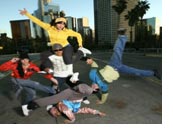 As part of its Family Amphitheatre series, this weekend the Skirball Cultural Center hosts Antics Performance, a unique LA urban dance experience.
As part of its Family Amphitheatre series, this weekend the Skirball Cultural Center hosts Antics Performance, a unique LA urban dance experience.
On Saturday, August 14 for two shows only at 12 pm and 2 pm, watch the talented Antics performers busting their moves, locking, popping, break-dancing and more. Check out some of their videos first and see why it’s sure to be a crowd pleaser.
Los Angeles-based Antics Performance is a hip-hop dance and theater company that incorporates in a single performance various dance styles, live DJ’s, stage acting and film elements. In addition to artistic innovation, Antics Performance is committed to spreading the gospel of self-expression through various community outreach activities such as residencies, workshops, and lecture/demonstrations.
The Skirball is located at 2701 North Sepulveda Blvd. in Los Angeles. For further information, call (310) 440-4500.
Posted 8/12/10
Kicking the junk mail habit
August 12, 2010
 You compost. You recycle. You bring your own bag to the grocery store.
You compost. You recycle. You bring your own bag to the grocery store.
Now it’s time to get to work on another environmental menace: junk mail.
Most attention in recent years has been focused on keeping spam out of computer inboxes. But unsolicited “snail mail”—coupons, credit offers, national advertising,
catalogs—has remained an annoying fact of life.
And, unlike spam, this kind of junk mail can end up in a landfill. To help you get out from under the onslaught, the county Department of Public Works has pulled together a page full of useful addresses and contacts. Just think of it as a spam filter for your mailbox.
The big chill
August 11, 2010
It’s been a long cold summer.
Whether the record-setting chill of July and early August makes this L.A.’s best or worst summer depends a lot on where you live—and a little on what you value most in the season. While waiters in Venice have had to hand out blankets to rooftop lounge patrons, kids in Sylmar have been able to frolic in an unusually temperate county park.
Hotter weather is expected this weekend—finally—and there are a lot of potentially scorching days yet to be logged before the sun sets on the summer of 2010. But what’s happened so far is unusual enough that the National Weather Service was moved to put out a statement Wednesday headlined, “What has happened to summer in Southern California?”
(The answer, in short, is that an upper level offshore trough—the kind that usually shows up in the fall or winter—has decided to park itself off the West Coast for the last 2 1/2 months.)
The ensuing, and seemingly endless, June gloom has led to some stunning temperature readings.
The average temperature of 65.7 degrees at LAX tied the record for the coldest July on the books since statistics started being kept in 1944, the weather service said. (July of 2010 shares the distinction with 1948 and 1965.) The high of 65 degrees logged at the airport on July 8, the weather service noted, “would be below normal even for January!”
With the weather service using exclamation points to underscore the drama of the situation, it’s no surprise that the coastline chill has led to some national media attention.
At Venice’s Hotel Erwin, waiters have had to hand out blankets and crank up heaters at the High Rooftop Lounge.
Even with such amenities, business is off as fewer patrons brave the uncharacteristically cool elements to enjoy 360-degree views from the hotel, which overlooks Muscle Beach.
“I’ve worked at outdoor restaurants for 6 years and I’ve never seen anything like this,” said Tiffany McClintock, a food and beverage manager at the High, as she calls it. “The weather has had a huge impact…We expect June gloom, but it’s August and usually we have summer by now.”
Although summer has been pretty much a bust for bronzing (which isn’t good for you anyway), it’s been a boon on the green side of things because power usage has dropped along with temperatures. The Los Angeles Department of Water and Power says that, since July 1, customers have been using 5.2% less than the department had forecast.
That’s a lot fewer air conditioners being cranked up.
“In cooler weather, there’s reduced demand for power, and that’s what we’re seeing,” said Michael Cockayne, supervisor of load forecasting at DWP.
A really hot summer day will demand 5,500-5,700 megawatts, he says. On Wednesday afternoon, the peak load was at about 3,830 megawatts.
“That’s very low,” he said,
Cockayne warns that no one should get too complacent, however. Peak power use days typically begin in earnest about the middle of August. “It’s a pretty good chance that we’ll see more peak days between August 15 and September 15,” he said.
So far this summer, though, the cooler weather has meant a break for lifeguards at county beaches, who’ve performed 3,050 rescues since June 1—compared to 6,745 in the same period last year.
Overall beach attendance is down, too, to just over 13 million visits in July. That’s well below the 18.9 million visits last July, but above the month’s average of 12.4 since 2000.
The cool summer has also offered a break to the elderly.
One measure of that is the fact that cooling centers have had to be activated only once this summer, notes Ellie Wolfe, manager of internal services for the county’s Community and Senior Services Department.
“I’m loving it,” Wolfe said. “It’s been a much safer and saner summer—so far.”
Kids attending summer camp at the county’s El Cariso Park in Sylmar have been enjoying cooler-than-usual days for field trips and park activities. “It’s been a whole lot nicer than last summer,” said Sandra Chapman, the park’s recreation supervisor.
At the El Cariso pool, the usually sweltering deck has stayed cooler this summer, to the delight of sunbathers. “People seem to love it because the weather is, like, perfect,” said pool manager Mike Baham. As for the lifeguards, “none of ‘em got burned this year.”
National Weather Service meteorologist Jamie Meier, stationed in Oxnard, hears it from both sides of the hot and cold debate.
“I get mixed reviews,” she said. Her family, living on the Westside, tells her: “Our air conditioning bill has been fantastic.” But a friend visiting from Texas was not so enthusiastic, summing up her feelings with a simple: “California is cold!”
Posted 8/11/10
New network to link first responders
August 10, 2010
The Board of Supervisors made a down payment Tuesday on an ambitious plan to link all of the region’s police, fire and emergency workers under a single, shared digital communications umbrella.
The Los Angeles Regional Interoperable Communication System—LA-RICS for short—aims to become the crucial communications infrastructure that connects more than 34,000 first responders and allied personnel in the Los Angeles region.
LA-RICS is a Joint Powers Authority set up in 2009 by the county and city of Los Angeles and 81 other local cities. The new voice and data radio system, to be linked with fiber optic cable, microwave antennae and other links, would replace the current patchwork that often makes communication between law enforcement and fire agencies difficult.
The new system should also make communication possible between dozens of fire and police agencies that gather to fight large-scale disasters, from 9/11 to Hurricane Katrina to Southern California’s large scale fires and earthquakes.
“When we have a disaster in this area, we’ll be able to communicate with anybody,” Scott Poster, a deputy county fire chief who is LA-RICS’ interim director, said in an interview following the meeting.
The system, to be designed and built over the next three to six years, may eventually cost more than $500 million, according to a consultants’ report. Officials hope to obtain federal grants and other funding streams to pay for the system.
The Board’s action unanimously approved a first year’s budget of $17.76 million. Of that, $10 million is slated for early initial spending on the communications infrastructure, from radio gear to software. The remaining $7.76 million is earmarked for staff costs, consultants’ and experts’ fees and office space.
Supervisors’ approval of the down payment came with cost-sharing questions. They had been expecting a similar $7.6 million appropriation for staff costs from the city of Los Angeles, the plan’s other major partner. But city funding hasn’t materialized yet, leaving the county, at the moment, the sole provider.
“We’re being asked to pay the whole sum from our resources, when the city has resources and should be contributing,” Supervisor Michael D. Antonovich noted, to Poster and county Chief Executive Officer William T Fujioka. “How do you plan to ensure that we don’t subsidize the city of Los Angeles?”
Antonovich added an amendment to the measure instructing Fujioka to question Los Angeles officials in the next 30 days whether it plans to contribute funding for staffing and report back to the board.
Posted 8/3/10
Meet the new MLK Board
August 10, 2010
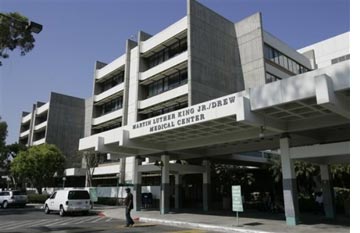 If it all begins at the top, the new Martin Luther King Jr. hospital is getting off to a powerhouse start.
If it all begins at the top, the new Martin Luther King Jr. hospital is getting off to a powerhouse start.
A seven-member board of directors for the new facility, being created as a partnership between the county and the University of California, was approved Tuesday by the Los Angeles County Board of Supervisors.
The board’s members, who came jointly recommended by the county’s Chief Executive Office and the UC, are Southern California leaders in the fields of medicine, health care management, business and law. (See bios below.)
One of the appointees, Paul King, the president and chief executive officer of Children’s Hospital of Los Angeles Medical Group, said the array of talent and experience on display among his new colleagues would be enough to intimidate many hospital administrators.
However, he said, this will be a board “that understands the difference between governance and management.”
The directors, who are expected to come together soon for their first meeting, will work with the project’s management team as it moves toward opening the facility in 2013. Under the agreement, the county is funding and rebuilding the facility to modern seismic standards while the UC is taking charge of all physician services there. The private, non-profit hospital will have 120 beds.
It will replace the former Martin Luther King Jr./Drew Medical Center, which closed to inpatients in 2007 after years of mismanagement and patient care lapses. The idea of joining forces with the UC to create the new hospital was first proposed by Supervisor Zev Yaroslavsky.
Helping to restore a crucial health care provider to people in South Los Angeles is a strong motivator for the directors, who will serve without pay.
“I think it’s an exciting time,” said one of the new board members, Manuel A. Abascal, a partner at Latham & Watkins. “I think every community deserves great health care.”
Other new directors echoed that sentiment. “I really believe that the South Los Angeles community deserves better access to quality health care,” said Dr. Elaine Batchlor, chief medical officer of L.A. Care Health Plan.
But no one was underestimating the size of the challenge ahead.
“It’s going to be quite the task,” King said. “Most of us who’ve been approached look upon this as a community service, seeking to really return health care to that community…We’ve got a lot to do. 2013 will come faster than anybody thinks.”
—————————————————————————————————————————————————

Manuel A. Abascal…
is a Los Angeles attorney who often works on health care cases.
Full bio

Dr. Elaine Batchlor…
is Chief Medical Officer of L.A. Care Health Plan.
Linda Griego…
is president and CEO of Griego Enterprises, Inc.
Paul King…
is president and CEO of Children’s Medical Group.
Michael Madden…
is the former CEO of Providence Healthcare of Southern California.
Dr. Robert Margolis…
is Managing Partner and Chief Executive Office of HealthCare Partners.
James Yoshioka…
is the former president and CEO of Citrus Valley Health Partners.
Full bio
Posted 8/10/10
County tastes Bell-style politics
August 10, 2010
Long before the revelations of stratospheric salaries, the residents of Bell were seething—as Arlene Barrera can tell you.
A top property tax official in the L.A. County Auditor-Controller’s Office, Barrera and a colleague were featured speakers at a May meeting of the grassroots Bell Resident Club. Their appearance was arranged by a woman who, in an e-mail to the county, said: “I cannot sleep at night, I cry all the time.” Property taxes, she said, were rising so rapidly in the working-class town that residents were being ruined.
On the night of the meeting in a rundown community center, Barrera felt their pain. “We need your help,” they told her. “A lot of our neighbors are losing their homes. They can’t afford the taxes.”
Barrera by then had seen those tax bills—the doubling of assessments by Bell, the extraordinary level of bond and pension debt for such a small and poor populace. “It was ridiculous,” Barrera says. But she could offer little direct relief to the residents, at least for the moment. These were city, not county, matters, she told them. The county mails the bills but the municipalities control them.
“The crowd was very angry. They felt locked out of City Hall,” says Barrera, who advised them on laws governing public records and open meetings. “I felt really bad. I told them, ‘You guys need to get an accountant.’ “
Beyond the intensity of the rancor, there was something else that caught Barrera by surprise that night—the turnout. She’d been prepped to expect a crowd of as many as 100 but only about 20 people showed up.
“I thought maybe they’d inflated the numbers just to get us out there,” Barrera says.
What she didn’t know was that the events leading up to her appearance were, in a sense, a microcosm of the kind of hardball politics and nasty tactics that had allowed Bell’s leadership to exert control and pocket paychecks that would soon become a national scandal.
—
Nestor Valencia has been a thorn in the side of the status quo.
Three years ago, he created the Bell Resident Club, with a stated mission to “take back our community in an honest and effective manner.” The group holds monthly gatherings, such as the one to which Barrera and Carol Quan of the county Assessor’s Office would be invited.
Twice, Valencia has run for a seat on the Bell City Council, and twice he has lost. Valencia says he is simply an advocate for more integrity and transparency in Bell’s dysfunctional civic life. His detractors say he is disruptive and disreputable.
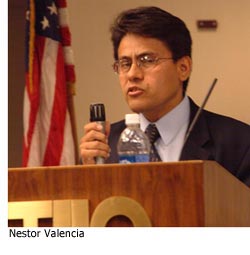 When it comes to Valencia and his group, the city hierarchy doesn’t seem to shy away from exerting its considerable influence in the community, according to documents and interviews.
When it comes to Valencia and his group, the city hierarchy doesn’t seem to shy away from exerting its considerable influence in the community, according to documents and interviews.
In March, for example, the principal of the Martha Escutia Primary Center in Bell says he was supervising more than 200 youngsters on the school grounds outside when he was summoned to the campus office for an “absolute emergency.”
“There was a woman there and she handed me a letter,’’ says Principal Marcus Billson. He says he was directed to “read this now.” On City of Bell letterhead, it accused Valencia of misrepresenting himself as a city employee in reserving a room at the well-respected Los Angeles Unified School District preschool, where the Bell Resident Club had scheduled a meeting. “We want you to be made aware of potential false misrepresentation and are concerned when individuals represent themselves as city employees,” said the letter, bearing the name of the city clerk.
Billson found the letter curious, at best.
“At no time did Mr. Valencia misrepresent himself,” Billson says. In fact, Valencia has a daughter at the school and is a member of the governance council. In Billson’s view, Valencia is “an outstanding young man who is one of my leading parents and is an example of community leadership.” Billson says he wrote a letter to the city to set the record straight.
The principal says he also received an unsolicited visit from a Bell police officer, who introduced himself as the department’s liaison to the school. The officer, wearing a suit and badge, said he was always available for whatever public safety issues might arise at the school. The conversation then took a turn.
The officer said he “was also there to warn me that there were citizens, primarily Nestor, who were very interested in getting into the middle of things in Bell and didn’t know what they were talking about.”
The impact of the policeman’s warning: “I felt like I was being pressured and I knew I wasn’t doing anything wrong.”
In the end, Billson says, the Bell Resident Club meeting was convened as scheduled at the school in mid-March and drew a raucous audience of more than 200. Meanwhile, the principal says he took the officer up on his generous offer to give a public safety talk to parents at the preschool. “I’ve been trying to walk down the middle,” Billson says of navigating the community’s political minefield.
The following month, the Bell Resident Club began moving forward with its plan to invite representatives from Los Angeles County to attend its meeting to explain why property tax bills were skyrocketing. Once again—this time to greater effect—Valencia and his group found themselves subjected to a campaign of misinformation and dirty tricks that included an inflammatory flier purportedly produced by the Bell Chamber of Commerce with the headline: “DON’T BE FOOLED BY LIARS & COWARDS!”
“A faction of evil-doers with a questionable agenda that hides behind the name Bell Residents Club [sic] is spreading lies about our City of Bell,” it says in one typical passage.
Among many other things, the flier—which was distributed at a food bank and a neighborhood watch meeting—accuses Valencia’s organization of “bringing gang members and other unsavory characters to our community” and of being “dangerous and out to destroy your quality of life in Bell.”
For its part, the Chamber of Commerce has disavowed the flier, calling it a fake.
“It was quite shocking to us,” says chamber President Ricardo Gonzalez. “I think it was done in poor taste.” He said the organization has not, however, tried to determine who was behind the screed, which bore the chamber seal. “We try to focus on the positive things in the community.”
As the May 18 meeting grew closer, efforts to scuttle it intensified.
One day before county officials Barrera and Quan were scheduled to show up, a manager of the meeting hall says he got an unnerving call from a man identifying himself as an officer with the Bell Police Department.
“He said not to rent out the room to Nestor Valencia since Mr. Valencia is a very problematic person,” recalls Marcelino Martinez of the AMORC Cultural Center. “He said Mr. Valencia has nothing to do with the city and to avoid problems I should not deal with him.”
Speaking in Spanish through an interpreter, Martinez says he felt threatened by the man’s “tone of voice and the way he was coming down on me.” Martinez, 66, emphasized that the caller did not provide a name, so he cannot be sure he was actually a policeman.
By then it didn’t matter, Martinez says, because arrangements had been approved by the Cultural Center and the meeting was moving forward as planned.
But not everyone, it seems, was ready to throw in the towel.
On the day of the meeting, Valencia says, he suddenly started hearing from residents who’d received phone calls announcing that the meeting was off. “People were calling saying, ‘I hear you cancelled the meeting tonight.” I said, ‘No, No, No.” Valencia suspects that someone obtained phone numbers from a petition he’d filed with the city, calling on Bell to stop issuing bonds that were increasing the tax load on residents.
That night, for whatever reasons, the crowd for Barrera’s and Quan’s presentation was spirited but disappointingly small. “It just fell apart,” says Valencia.
Afterwards, he says he told Barrera of the efforts to undermine his community organizing and handed her copies of the disputed Chamber of Commerce flier and the City Hall “emergency” document that had been hand-delivered to the preschool principal. “This is what happened,” he says he told her. “Normally, we get many more people.”
As Barrera tucked the documents away, she says Valencia “apologized profusely.”
—
As it turned out, Bell’s residents got something more than an accountant, as Barrera had suggested back in May.
They got investigations by the L.A. County district attorney, the California attorney general and the state controller, among others. And they now have the full-time attention of the county auditor-controller’s office, which has found itself swept up in the media storm.
“For more than two weeks the staff and I feel like we’ve been working for the City of Bell—without the big salaries,” says Auditor-Controller Wendy Watanabe.
As soon as the Los Angeles Times disclosed in July that Bell City Manager Robert Rizzo was making nearly $800,000 and that Police Chief Randy Adams was banking twice as much as LAPD Chief Charlie Beck, Barrera immediately thought back to her night in Bell and those extraordinarily high tax rates from bond measures and city assessments.
“When news of the salaries hit, I pulled down my file and said, ‘This is coming back.’ Maybe this is where the bond money was going.”
Since then, Barrera and her team have been studying Bell property tax bills as though they’re forensic evidence, searching for clues and answers to how the city’s tax rate became the second highest in Los Angeles County—especially considering that its population of 39,000 has a median annual income of only $40,556, which is $17,000 below the county average.
Along the way, besides responding to a daily onslaught of media inquiries, the auditors have turned up some eye-catching findings in their examination of property tax bills in Bell and across the county.
One of their studies, for example, resulted in the surprising finding that, in many cases, the county’s poorer cities have been saddled with higher tax rates than far more affluent areas.
Barrera says her team is now undertaking an ambitious effort to examine the top ten cities with the highest levels of voter-approved indebtedness. The goal, she says, is to ensure that those cities are not spending more than the amount stated in local ballot measures.
“I feel energized,” says Barrera, a 24-year veteran of the Auditor-Controller’s Office, who has been in her current job for only a year. “I see a lot of areas I want to look at.”
L.A. lifeguards runaway winners—again
August 10, 2010
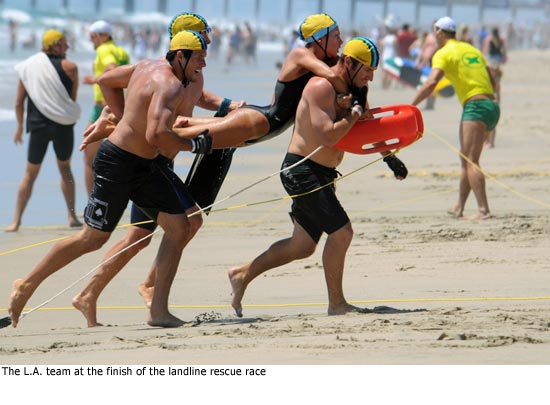 Los Angeles County lifeguards boast an athletic dynasty that even the New York Yankees can’t touch.
Los Angeles County lifeguards boast an athletic dynasty that even the New York Yankees can’t touch.
The county team swamped the competition at the three-day National Lifeguard Championships last weekend in a swirl of swimming, paddling, running and water rescue work—for the 24th straight year.
L.A. hasn’t lost the team title since 1986. Since the U.S. Lifesaving Association launched the event in 1970, they’ve captured that title an amazing 37 out of 40 times.
“People were in awe of what we were able to do,” says Capt. Jay Butki, one of the team’s managers. “We’re ecstatic.”
The final team score at this year’s competition at Huntington Beach wasn’t close. The L.A. team scored 812.5 points. The second place squad, from Delaware, finished with 223.75.
“Most likely, we’ll never lose this title,” says Brian Murphy, who won the men’s open championship and is stationed in Santa Monica.
The L.A. County team was so dominant that it also claimed six of the top 10 spots in both the men’s and women’s individual competitions.
The No. 1 woman was Alison Riddle, 24, who won 5 of the 8 competitions she entered, including the iron woman, a combination of running, board paddling and swimming.
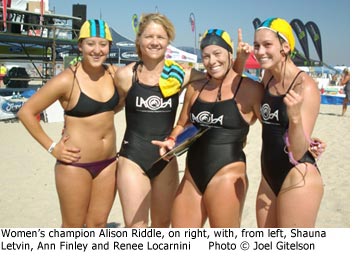 “It was awesome,” says Riddle, who savored her ironwoman victory the most. “It’s such a long event and that makes it really tough.”
“It was awesome,” says Riddle, who savored her ironwoman victory the most. “It’s such a long event and that makes it really tough.”
Making life tougher were water temperatures that didn’t feel like summer. “The water was so cold it gave you an ice cream headache,” she says.
Riddle joined the Lifeguards in 2008, shortly after graduating from USC, where she played varsity water polo. Her weekend victories netted her medals and a pair of sunglasses for each victory. But, in her business, not even champions catch a break: Riddle reported for her regular shift on Monday at 7 a.m. at Redondo Beach’s Avenue C tower.
Riddle, who finished ninth as a rookie in last year’s championship, says she owes much of her success to a trip last winter to train in Australia, where she worked hard on paddle boarding. “To be able to learn from the best in the world was amazing,” she says.
Murphy, the men’s champion, won three events—paddleboard, surf ski and the so-called Taplin relay, a team medley race that involves swimming, paddling and rowing. The 27 year old grew up in the South Bay, with three older brothers who also became lifeguards. He signed up at 18. (He still competes in team events with his brother Mike.)
Murphy remembers being in awe as a little boy at lifeguard competitions. “I grew up watching all these guys race, and now I’m lucky enough to do it myself,” he says.
Riddle and Murphy can’t rest on their victories. Next month, they’ll be jetting to Japan, part of a 12-person national team that will include four other L.A. lifeguards.
The secret to L.A.’s dominance partly involves size. It’s the nation’s largest lifeguard service and hosts the biggest team, with 57 competing this year among the 450 from around the country.
Peak physical conditioning is another L.A. tradition.
“That’s one of the things we pride ourselves on,” says Capt. Chris Linkletter, a team manager and competitor who practices what she preaches. She won a 2K run in the 40 to 44 age bracket and finished second or third in six other events, including two different ironwoman competitions.
The team’s strong representation in the older age categories is a key to the team’s dominance, team members say. They routinely do extraordinarily well in all of the over 30 age brackets, a fact no one knows better than this year’s most senior competitor, John Matesich, 72.
Matesich, a county lifeguard for 49 years, won all of his three events in the over-70 bracket, including the board race and men’s ironman.
“He’s been a legend forever,” says Butki.
So, it seems, has the L.A. team.
Posted 8/10/10












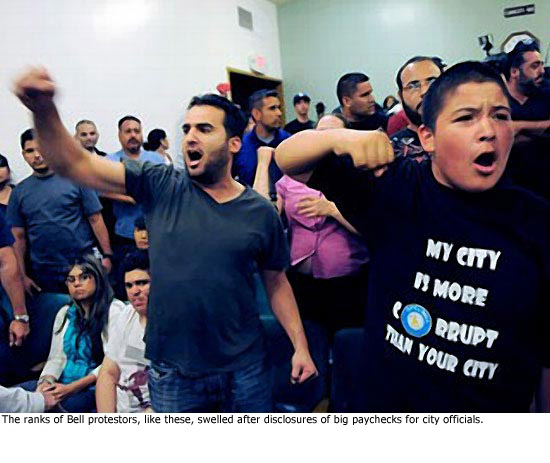
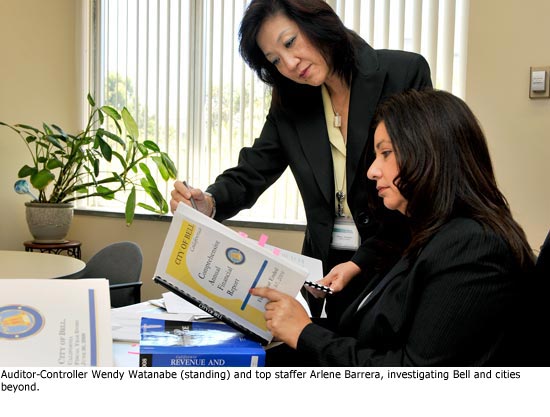







 Check for the latest closure information
Check for the latest closure information








